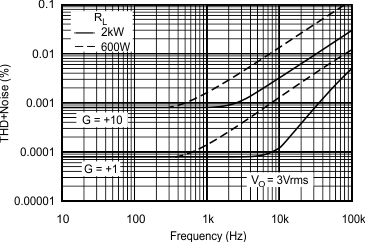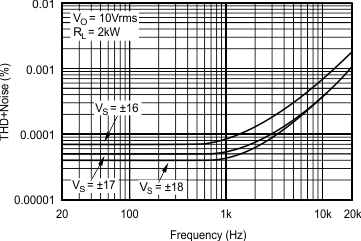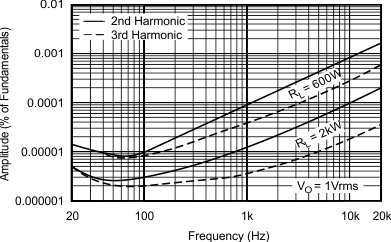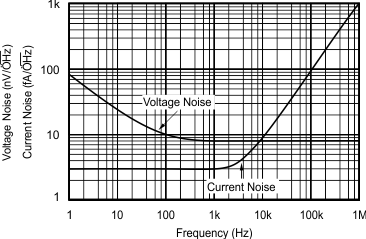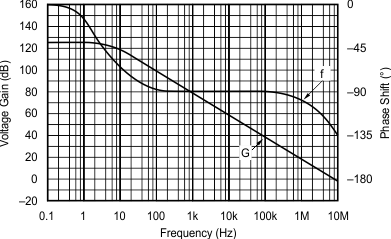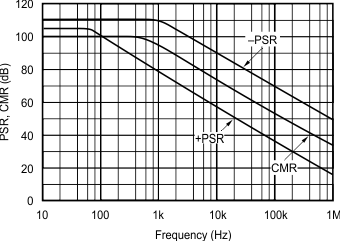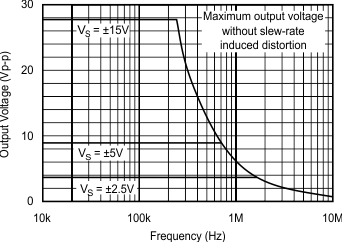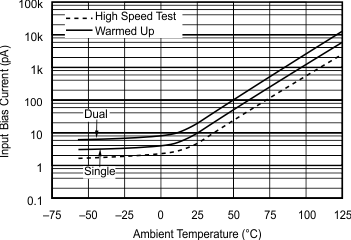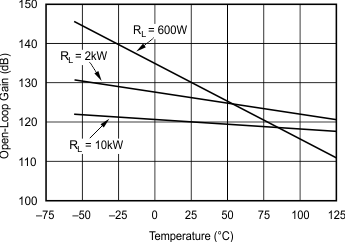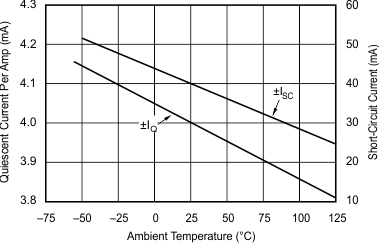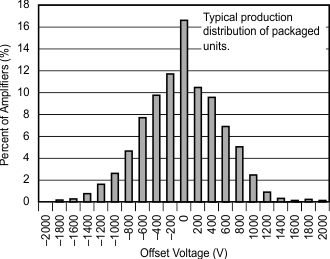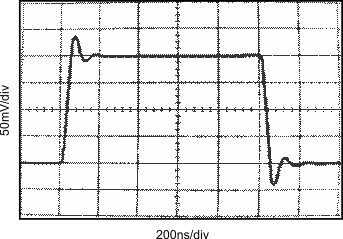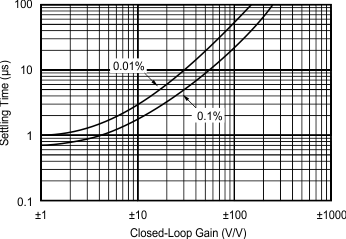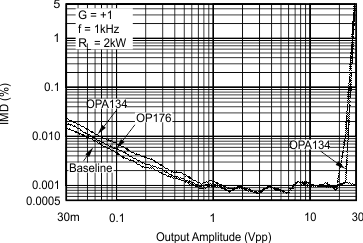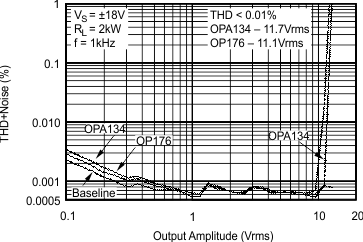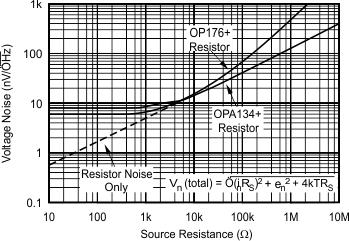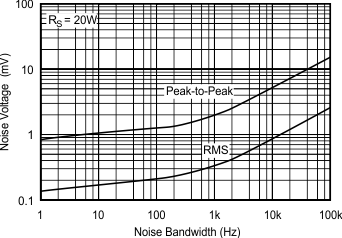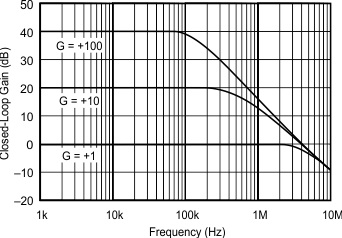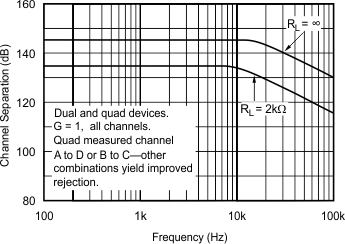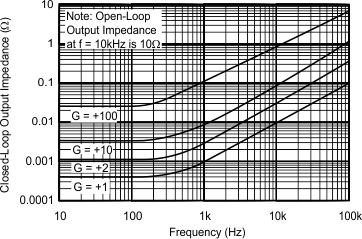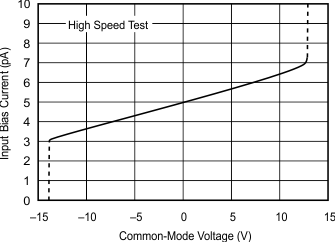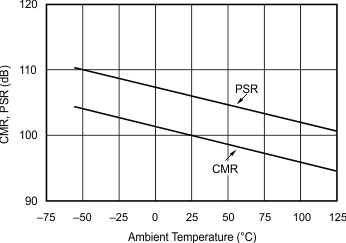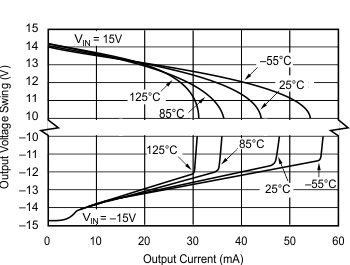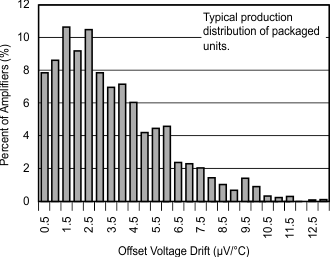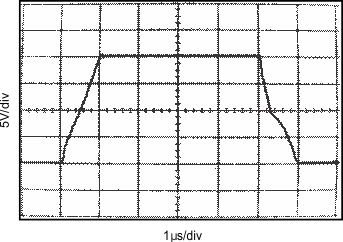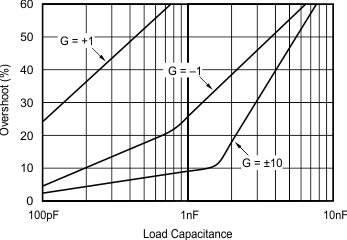SBOS058A December 1997 – October 2015 OPA134 , OPA2134 , OPA4134
PRODUCTION DATA.
- 1 Features
- 2 Applications
- 3 Description
- 4 Revision History
- 5 Pin Configuration and Functions
- 6 Specifications
- 7 Detailed Description
- 8 Application and Implementation
- 9 Power Supply Recommendations
- 10Layout
- 11Device and Documentation Support
- 12Mechanical, Packaging, and Orderable Information
封装选项
机械数据 (封装 | 引脚)
散热焊盘机械数据 (封装 | 引脚)
- D|8
订购信息
6 Specifications
6.1 Absolute Maximum Ratings
over operating free-air temperature range (unless otherwise noted) (1)| MIN | MAX | UNIT | ||
|---|---|---|---|---|
| Supply voltage, V+ to V– | 36 | V | ||
| Input voltage | (V–) –0.7 | (V+) +0.7 | V | |
| Output short circuit(2) | Continuous | |||
| Operating temperature | –40 | 125 | °C | |
| Junction temperature | 150 | °C | ||
| Lead temperature (soldering, 10 s) | 300 | °C | ||
| Tstg | Storage temperature | –55 | 125 | °C |
(1) Stresses beyond those listed under Absolute Maximum Ratings may cause permanent damage to the device. These are stress ratings only, which do not imply functional operation of the device at these or any other conditions beyond those indicated under Recommended Operating Conditions. Exposure to absolute-maximum-rated conditions for extended periods may affect device reliability.
(2) Short-circuit to ground, one amplifier per package.
6.2 ESD Ratings
| VALUE | UNIT | |||
|---|---|---|---|---|
| OPA134 in PDIP and SOIC Package, OPA2134 and OPA4134 in PDIP Package | ||||
| V(ESD) | Electrostatic discharge | Human-body model (HBM), per ANSI/ESDA/JEDEC JS-001(1) | ±2000 | V |
| OPA2134 in SOIC Package | ||||
| V(ESD) | Electrostatic discharge | Human-body model (HBM), per ANSI/ESDA/JEDEC JS-001(1) | ±2000 | V |
| Charged-device model (CDM), per JEDEC specification JESD22-C101(2) | ±500 | |||
| OPA4134 in SOIC Package | ||||
| V(ESD) | Electrostatic discharge | Human-body model (HBM), per ANSI/ESDA/JEDEC JS-001(1) | ±2000 | V |
| Charged-device model (CDM), per JEDEC specification JESD22-C101(2) | ±200 | |||
(1) JEDEC document JEP155 states that 500-V HBM allows safe manufacturing with a standard ESD control process.
(2) JEDEC document JEP157 states that 250-V CDM allows safe manufacturing with a standard ESD control process.
6.3 Recommended Operating Conditions
over operating free-air temperature range (unless otherwise noted)| MIN | NOM | MAX | UNIT | ||
|---|---|---|---|---|---|
| VS | Supply voltage, VS = (V+) – (V–) | ±2.5 | ±15 | ±18 | V |
| TA | Specified temperature | –40 | 85 | °C | |
6.4 Electrical Characteristics
At TA = +25°C, VS = ±15 V, unless otherwise noted| PARAMETER | TEST CONDITIONS | MIN | TYP | MAX | UNIT | ||
|---|---|---|---|---|---|---|---|
| AUDIO PERFORMANCE | |||||||
| Total Harmonic Distortion + Noise | G = 1, f = 1 kHz, VO = 3 Vrms | RL = 2 kΩ | 0.00008% | ||||
| RL = 600 Ω | 0.00015% | ||||||
| Intermodulation Distortion | G = 1, f = 1 kHz, VO = 1 Vp-p | –98 | dB | ||||
| Headroom(1) | THD < 0.01%, RL = 2 kΩ , VS = 18 V | 23.6 | dBu | ||||
| FREQUENCY RESPONSE | |||||||
| Gain-Bandwidth Product | 8 | MHz | |||||
| Slew Rate(2) | ±15 | ±20 | V/µs | ||||
| Full Power Bandwidth | 1.3 | MHz | |||||
| Settling Time 0.1% | G = 1, 10-V Step, CL = 100 pF | 0.7 | µs | ||||
| Settling Time 0.01% | G = 1, 10-V Step, CL = 100 pF | 1 | µs | ||||
| Overload Recovery Time | (VIN) × (Gain) = VS | 0.5 | µs | ||||
| NOISE | |||||||
| Input Voltage Noise | Noise Voltage, f = 20 Hz to 20 kHz |
1.2 | µVrms | ||||
| Noise Density, f = 1 kHz |
8 | nV/√Hz | |||||
| Current Noise Density, f = 1 kHz | 3 | fA/√Hz | |||||
| OFFSET VOLTAGE | |||||||
| Input Offset Voltage | ±0.5 | ±2 | mV | ||||
| TA = –40°C to 85°C | ±1 | ±3(3) | |||||
| Input Offset Voltage vs Temperature | TA = –40°C to 85°C | ±2 | µV/°C | ||||
| Input Offset Voltage vs Power Supply (PSRR) | VS = ±2.5 V to ±18 V | 90 | 106 | dB | |||
| Channel Seperation (Dual, Quad) | DC, RL = 2 kΩ | 135 | dB | ||||
| f = 20 kHz, RL = 2 kΩ | 130 | ||||||
| INPUT BIAS CURRENT | |||||||
| Input Bias Current(4) | VCM = 0 V | 5 | ±100 | pA | |||
| Input Bias Current vs Temperature(3) | See Typical Characteristics | ±5 | nA | ||||
| Input Offset Current(4) | VCM = 0 V | ±2 | ±50 | pA | |||
| INPUT VOLTAGE RANGE | |||||||
| Common-Mode Voltage Range | (V–)+2.5 | 13 | (V+)–2.5 | V | |||
| Common-Mode Rejection | VCM = –12.5 V to 12.5 V | 86 | 100 | dB | |||
| TA = –40°C to 85°C | 90 | ||||||
| INPUT IMPEDANCE | |||||||
| Differential | 1013 || 2 | Ω || pF | |||||
| Common-Mode | VCM = –12.5 V to 12.5 V | 1013 || 5 | Ω || pF | ||||
| OPEN-LOOP GAIN | |||||||
| Open-Loop Voltage Gain | RL = 10 kΩ , VO = –14.5 V to 13.8 V | 104 | 120 | dB | |||
| RL = 2 kΩ , VO = –13.8 V to 13.5 V | 104 | 120 | |||||
| RL = 600 Ω , VO = –12.8 V to 12.5 V | 104 | 120 | |||||
| OUTPUT | |||||||
| Voltage Output | RL = 10 kΩ | (V–)+0.5 | (V+)–1.2 | V | |||
| RL = 2 kΩ | (V–)+1.2 | (V+)–1.5 | |||||
| RL = 600 Ω | (V–)+2.2 | (V+)–2.5 | |||||
| Output Current | ±35 | mA | |||||
| Output Impedance, Closed-Loop(5) | f = 10 kHz | 0.01 | Ω | ||||
| Output Impedance, Open-Loop | f = 10 kHz | 10 | Ω | ||||
| Short-Circuit Current | ±40 | mA | |||||
| Capacitive Lead Drive (Stable Operation) | See Typical Characteristics | ||||||
| POWER SUPPLY | |||||||
| Specified Operating Voltage | ±15 | V | |||||
| Operating Voltage Range | ±2.5 | ±18 | V | ||||
| Quiescent Current (per amplifier) | IO = 0 | 4 | 5 | mA | |||
| TEMPERATURE RANGE | |||||||
| Specified Range | –40 | 85 | °C | ||||
| Operating Range | –55 | 125 | °C | ||||
(1) dBu = 20*log (Vrms/0.7746) where Vrms is the maximum output voltage for which THD+Noise is less than 0.01%. See THD+Noise text.
(2) Proposed by design.
(3) Proposed by wafer-level test to 95% confidence level.
(4) High-speed test at TJ = 25°C.
(5) See Figure 14
6.5 Typical Characteristics
At TA = 25°C, VS = 15 V, RL = 2 kΩ, unless otherwise noted.